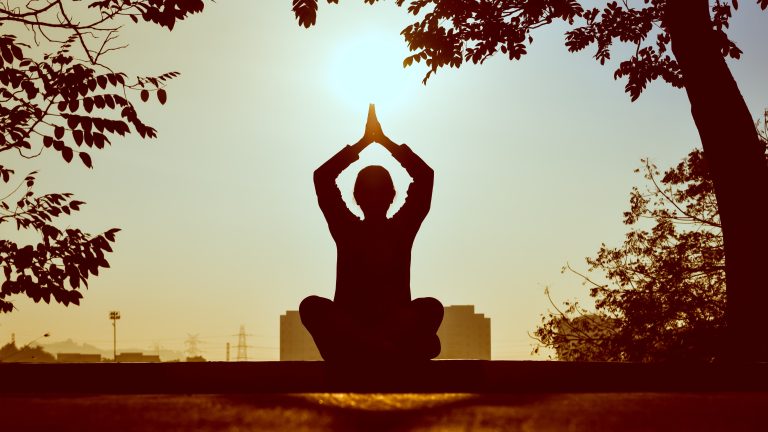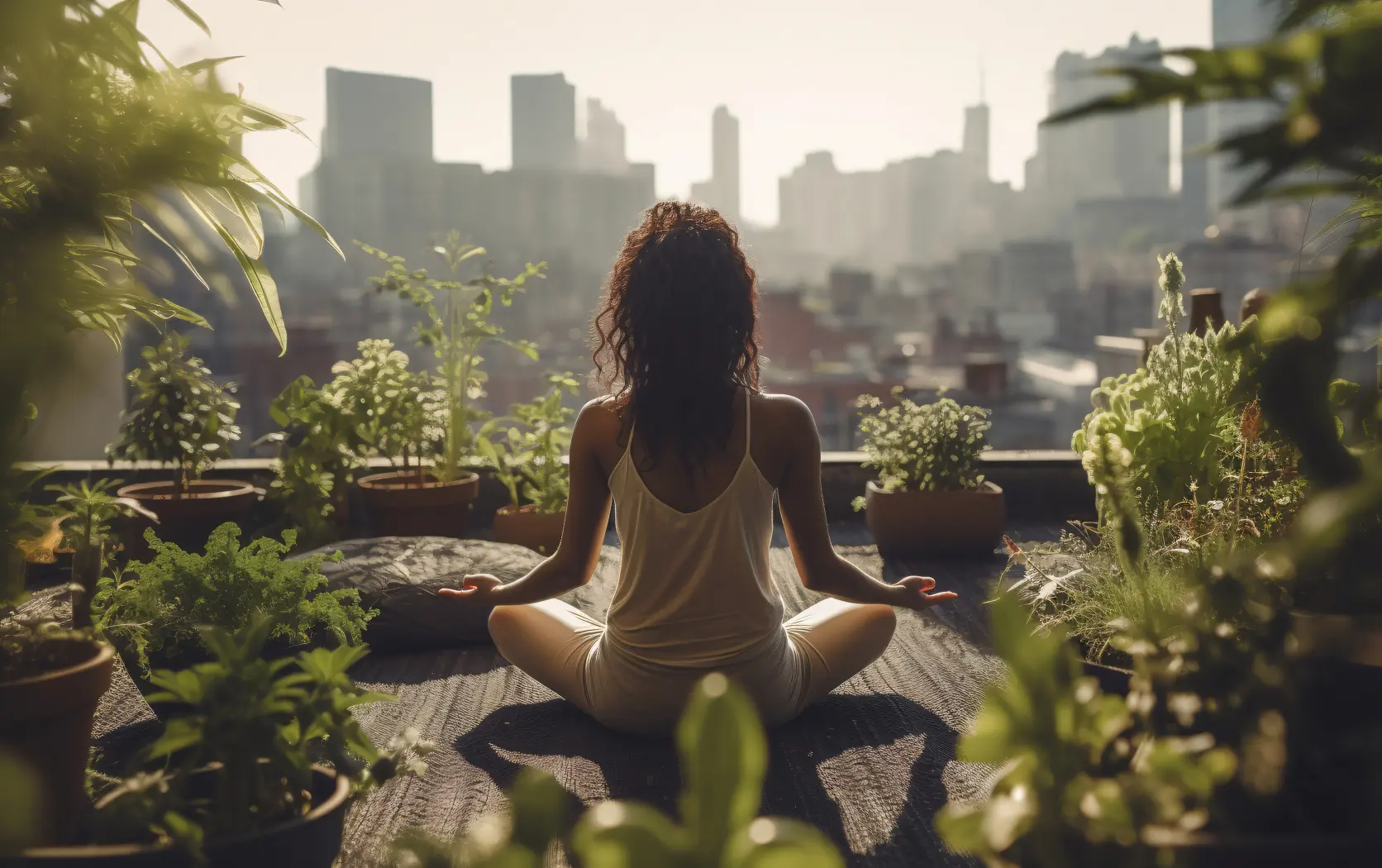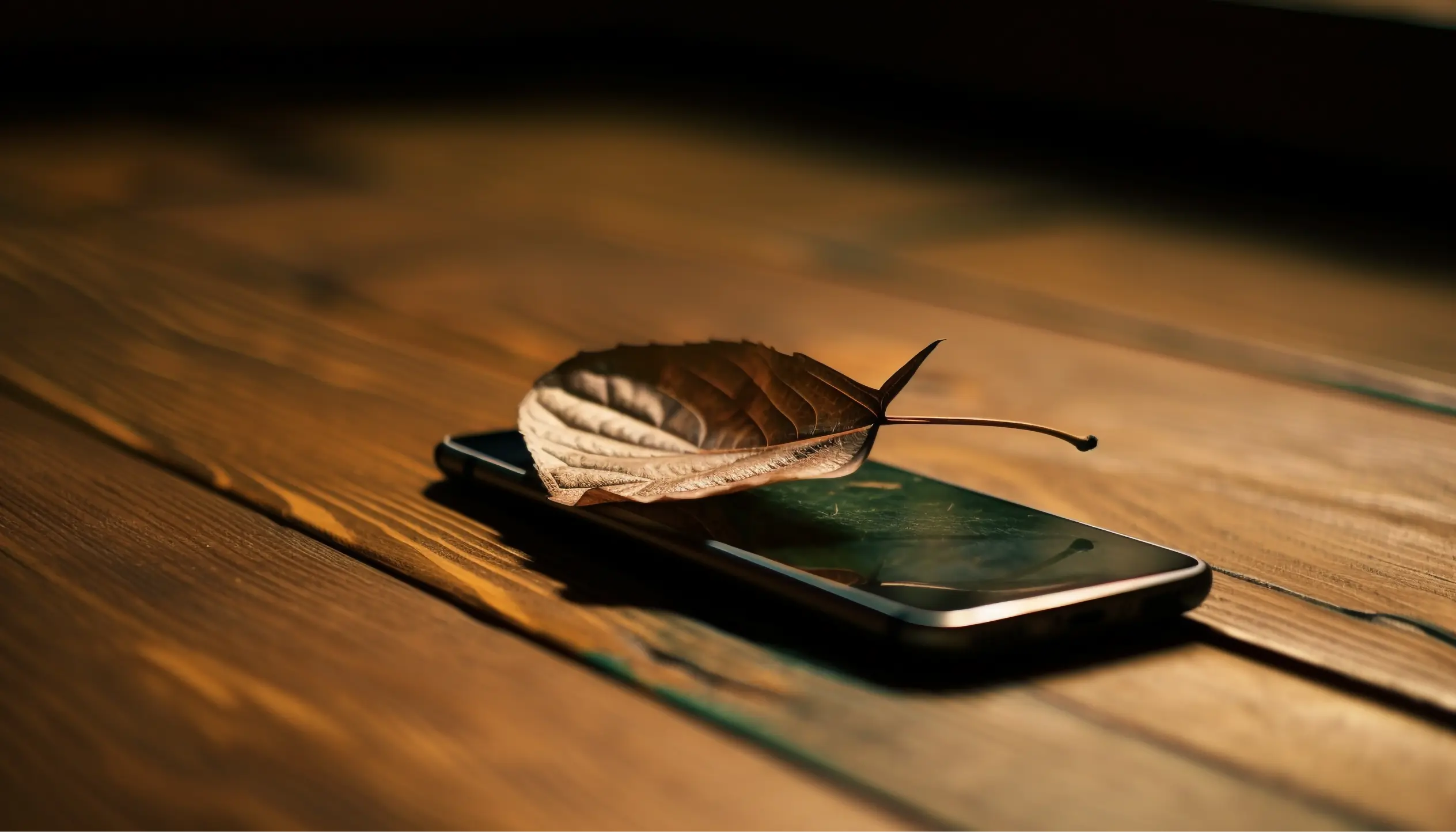In the hustle of everyday life it’s easy to miss out on the small moments that make up your journey. We’re chasing lists, goals and trends, and in this race to be relevant we have forgotten what it’s like to be mindful of the objects and interactions of the present moment. Mindfulness has roots in Eastern philosophy, and as we dive deeper into ancient practices for wellness it is good to see mindfulness being embraced as a powerful tool to find meaning in what we do, the way we show up, and the relationships that we build.
In this article let’s take a look at what it means to be mindfully present in the context of our hectic lifestyles,and the profound impact it has on stress management, mental health and our overall well-being. How does one slow down yet stay on trend? How does one block out the exterior noise and focus on the conversation happening in the room? Let’s take a look!

Meet your Happiness Goals on Happily
Our Relevant Products
Feel Calm
Feel Motivated
Mindful Relationships
Personal Growth
Brtter Sleep
Slowing Down
and many more...
What does it mean to be mindful?
At its core, mindfulness is simply about being fully present in the moment. It involves paying attention to your thoughts and feelings without judgement, and being highly aware of your surroundings. It is one of the simplest concepts, but most difficult to follow.
So, what does one have to do to be more mindful? There is enough literature that will introduce you to concepts like guided meditation, sleep meditation, mindful eating, nature breaks and so on, but we understand that it can get overwhelming. Sometimes all this information confuses us enough to avoid practising mindfulness, which is why in this article we wish to share with you a list of handful tips that you can use on a daily basis, and slowly understand what it means to go slow, live in the moment and be more mindful.
Practical tips for mindfulness that you can use in day to day life
1. Start your morning slow
We’ve become used to waking up and checking our phones, which means that we’re not giving ourselves enough time to get oriented with the day. As soon as you wake up you already have a task list in mind, and every minute now looks accounted for. Brushing your teeth and making your bed are just tasks on a to-do list before you get to work, and this simple habit is contributing to the stress levels in your life.
The good news is that there is a way to combat it. Start your day slowly. Avoid checking your phone for the first 30 minutes. In this time, take time to brush your teeth, make your bed, brew your coffee, fill your water bottles, water your plants, the works! It’s a simple change that will not make you too uncomfortable, so maybe you can start by giving this a try!
2. Notice how you breathe
If you can, avoid checking your emails and stay present – pick up a book, or sit in the balcony and enjoy your neighbourhood, or simply smell your coffee! When you sit down to have your cuppa, pay attention to your breath. Inhale slowly, take a deep breath and feel your stomach fill up with air, and exhale slowly. Repeat this 8-10 times as you enjoy the morning, and then proceed to the rest of your day.
Pro-tip: adding post it notes around your work desk with reminders to breathe deeply can help you regulate your emotions during stressful times at work too!
3. Pay attention to your food
Mindful eating is a gamechanger not just for your mental health but also your gut health! You will start to notice how foods make you feel, and it will be easy to develop a healthy relationship with food where you’ll learn to see it as nutrition and not something wrong that makes you gain weight1 What is mindful eating exactly? Simply put, you pay attention to the food that you eat. You notice the colours, the texture, the flavours. A tip that enables you to eat slowly and mindfully – chew 16 times before swallowing, and you will notice the difference it makes to your meal times! This way you’ll be able to take out 20-30 min for a lunch break, and it is far better than quickly munching on a snack while you finish your tasks at the desktop. Try it and see the difference!
Download the app today!
4. Make Pomodoro Technique your best friend!
Capitalism will make us believe that rest is a waste of time, but there is enough research to prove that rest is essential to your body in order to stay efficient and productive. We’re not robots, and we need short breaks to reset our minds. The Pomodoro method is the best one here, and here’s what you have to do:
- Choose a task
- Set a timer of 20-25 minutes
- Keep all distractions aside and hyper-focus for that set time
- When the timer rings, take a short break (5-7 minutes) and step away from your work. Walk, talk to someone, and try keeping social media usage to a minimum because once you go down the rabbit hole of memes, losing track of time gets easy! If it helps, set a timer for your break too.
- Get back to your work, and repeat these steps again. This way, you ensure that your day is filled with enough breaks too.
5. Watch your digital consumption
We live in the age of digital media and it is next to impossible to avoid social media apps and news coverage. So how do you stop yourself from getting consumed by the digital world? 2 things-
- Tech-free time is important: you have to designate specific times of the day to disconnect from electronic devices. This can be the first 30 minutes of your day, lunch time, that hour you spend at the gym, and the last 30-45 minutes before you end your day.
- Practise digital wellbeing: use screen timer data to analyse your app use, and set limits if needed. Turn on DND mode once you end the work day, switch on quiet mode on social media apps so that you’re not interrupted by notifications. These are small habits that will help you focus on the present moment, and you will find it easy to stay present in the room.
6. Practice effective listening
This involves being fully focused on the speaker, with no interruptions and reactions until they’re finished talking. This helps in better communication, reduces conflict and misunderstandings, and helps develop more mindful relationships.
7. Practice gratitude
We’re all using the word “gratitude” quite often these days, but what does it really mean? It means reflecting on things that you’re blessed with in life, and celebrating the fact that you get to experience life the way you are. Gratitude is an important practice that enables a better way of life, but it needs a lot of practice. Start small, start by writing down 3-5 things that make you happy every day. You can do this exercise in the morning, or at the end of the day, or both. Over time you will see that this becomes the regular way with which you approach situations, and you will find it easy to focus on things that matter to you.
Some gratitude prompts that will help you understand this exercise a little better:
- Today I am grateful for…
- This made me smile today
- I thought a lot about this person today
- 5 things that make my life convenient
- 3 things that brought me joy today
Mindfulness will help you notice things more closely, and will enable you to live a life filled with empathy. Integrating mindfulness into your life is a powerful tool for maintaining mental and emotional balance. The idea is to break down these bigger concepts into smaller habits. Have you checked our Habit Feature on the Happily app? Download the app and see for yourselves how we enable significant improvements in your overall well-being by helping you set daily habits that help you reach closer to your goals.






